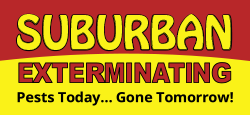
Ticks and lyme disease often go hand-in-hand. The nymphs of the deer ticks are largely responsible for the transmission of Lyme’s disease. Lyme’s disease is the most significant tick-borne disease in the United States. Lyme disease is a bacterial infection primarily transmitted by deer ticks. Lyme disease symptoms are similar to many other diseases and can affect any organ of the body, including the brain and nervous system, muscles and joints, and the heart. Only 25% of Lyme disease patients recall a tick bite. Here is a checklist for Lyme disease symptoms.
Deer Tick Facts
Deer Ticks are also sometimes called Blacklegged Ticks. These bugs are small – only about 1/16 to 1/8 of an inch long. They have an orange-brown body and dark reddish-brown head shield.
Generally, ticks have four life stages: egg, six-legged larva, eight-legged nymph, and adult. After hatching from the eggs, ticks must eat blood at every stage to survive.
Tick larvae and adults commonly infest white-footed deer mice and deer. Most humans are infected through the bites of immature ticks called nymphs. Nymphs have a much wider range of hosts including humans.
Deer ticks climb grass and shrubs and wait for host animals. Typically, they live in areas between fields and lower grassy vegetation, along animal trails, and in animal nests and dens like woodpiles, burrows in the ground, stumps, logs, old rat and bird nests, and crawlspaces.
May is Lyme Disease Awareness Month. Call today for a tick treatment in your yard (631) 864-6900 or (516) 864-6900 Ask for a free estimate.




